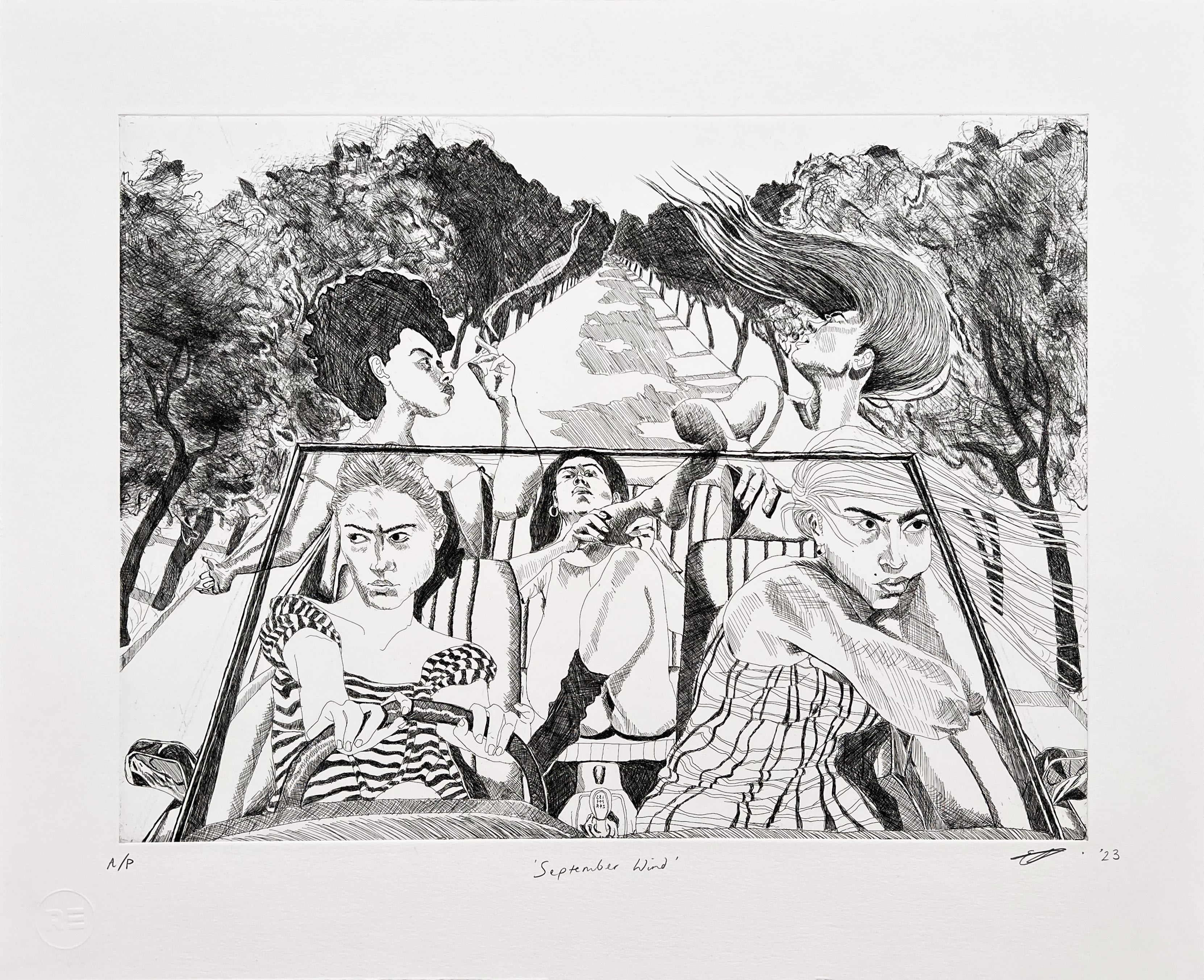Printmaking is an artistic process that has traditionally involved a long and delicate process of transferring images from a matrix or plate onto another surface – e.g. paper or fabric. The long-established techniques include woodcut, etching, engraving and lithography whilst constantly emerging technologies have more recently evolved to include screenprinting and giclée printing for a more professional and flexible final image.
For example, intaglio printing methods, such as etching, involves lines and textures being engraved onto the surface of a metal plate (such as iron, copper, or zinc) and then dipped into various acid baths to produce incised lines deep enough to contain the printing ink. As you can imagine, this is an extended process that takes patience and a strong attention to the intricacy of the preparation of the print.
It is important that we keep these traditional methods in circulation as printmaking has helped to shape culture all over the world as it was originally used as a form of communication and a tool to convey knowledge. Here at RHODES, we have a selection of different types of printmaking such as ‘September Wind’ by Eliza Hopewell.
 'September Wind' etching print by Eliza Hopewell.
'September Wind' etching print by Eliza Hopewell.
In this piece, we can see the velvet smooth mark-making created by Hopewell from etching into a metal plate. Her use of cross-hatching and layers of engraving into the plate creates the areas of depth as the plate has been cleaned immaculately with no smudges or movement of the ink.
As well as these traditional methods, as technology advances we can also appreciate how printmaking has evolved to include new digital methods such as the giclée print. A giclée print is a digitally created imaged transferred onto paper or fabrics. This has allowed for more accuracy and precision than the more manual methods of printmaking – these new possibilities grant artists more flexibility and control over their final print. This is also advantageous for collectors as it is more accessible so it can reach a wider range of audiences. Digital technology is an ever-increasing tool in the art world as high-resolution ink jet printers can create intricately detailed designs with a shaper quality and a higher resolution than ever before.
'CRASH (Venus)' giclée print by Lino Lago.
For example, Lino Lago combines both the contemporary and the traditional here in his ‘CRASH (Venus)’ technologically created giclée print. The details here are crisp and definite as he has complete control over the final outcome. Imitating the marks and strokes of paint through a digital brush, this is a crafted outcome that takes time and patience. By combining the discourses of the art academies of the late 18th century with current styles of art to produce his digitally created image, both conceptually and visually, Lago’s work belongs to the milieu of contemporary art.
At RHODES we celebrate all types of printmaking which includes giclée printing as well as traditional methods - for more information on the types of prints that we have on offer, please email info@rhodeseditions.com or visit https://rhodeseditions.com/.




